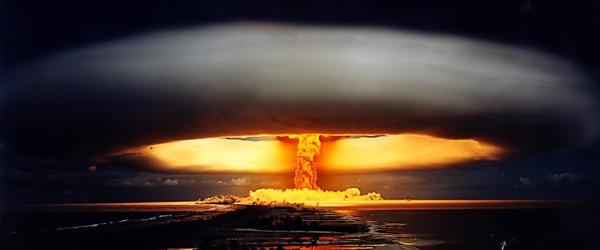
Jeffrey Lewis writes: In an earlier job, I ran a project that tried to outline options for what would become the 2009 Nuclear Posture Review. One of the better parts was the travel. I made a lovely visit to Brussels, where my team had a series of very high-level meetings at the European Union and NATO headquarters. There were some steak frites, a little lambic beer, and a lot of talk about nuclear weapons. And at the time, senior U.S. military officers made one thing very clear to us: The security at the bases stunk. One commander noted that the upgrades necessary to meet security requirements would run into the hundreds of millions of dollars. Another said his worst fear was that a group of activists would be able to get inside the shelters where the nuclear weapons are stored and use a cell phone to publish a picture of the vaults.
And then it happened. In January 2010, a group of protesters who call themselves “Bombspotters” entered Kleine Brogel.
Apparently the plan was to hang around on the tarmac of the runway and get arrested. But no one came to arrest them. So they wandered around — for either 40 minutes or an hour, the accounts differ — before walking through an open gate into an area with hardened aircraft shelters for the base’s F-16s. Eventually, as the hippies continued to wander around the shelters, security arrived.
The “security force” was one moderately annoyed-looking Belgian guy with a rifle — an unloaded rifle. The effect would only have been more comedic if he had some powdered sugar on his face and maybe a little bit of waffle stuck to his uniform.
The protestors were briefly detained but not for long. There was no panic. The mood in Belgium seemed to be something like “you crazy kids.” Not to worry, the Belgians assured their American partners, the activists weren’t anywhere near the shelters with nuclear weapons.
So, a few months later, the activists entered the base again. They helpfully sent me a little note. This time, they not only got inside the proper area, but they also got inside one of the shelters.
Security never showed up. Apparently, the base commander found out about the incursion when the rest of us did — when the activists posted a video on YouTube a day or so later. This was literally the scenario the U.S. military officer had warned us about — hippies inside a shelter with a cell phone, security nowhere to be found.
Yet still no panic.
One way to look at this is to say that the multiple and redundant security features worked. Sure, the Belgians should have caught the activists at the fence. And, sure, the hippies got inside the inner perimeter. And, sure, the shelter shouldn’t have been unlocked. But the nuclear weapons inside the shelter were still secure in a vault in the floor. A terrorist would have needed the code or a jackhammer to access the bomb itself. Even if it was only the last, or next to last, line of defense, it still worked. Another day without a nuclear holocaust. Who’s complaining?
The other way to look at it is to see that the security failures were not independent. The base had a lax security culture that makes anything possible. There were no dogs because the Belgians were too cheap to hire a dog-master. Who is to say what other security breaches might be possible? Who is to say the same people who didn’t bother to lock the gates or the shelters wouldn’t also leave a vault open? Or wouldn’t say something indiscreet, allowing a group of armed men to show up as a bomb is being moved for servicing? According to this view, you either take security seriously, or you don’t. If you don’t, you are vulnerable to systematic breakdowns that allow the seemingly impossible to happen. [Continue reading…]

